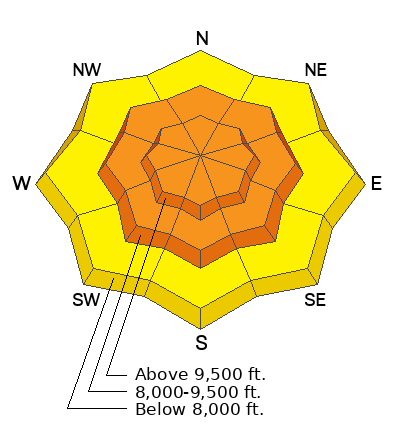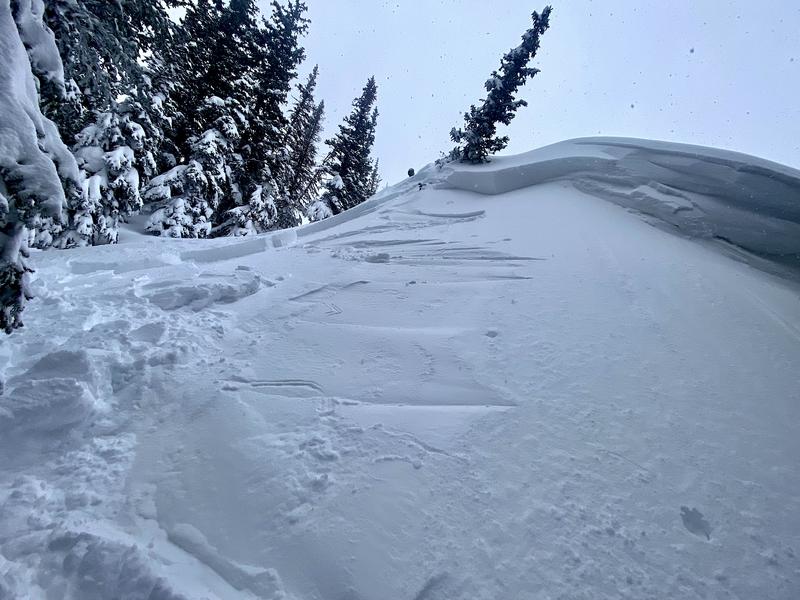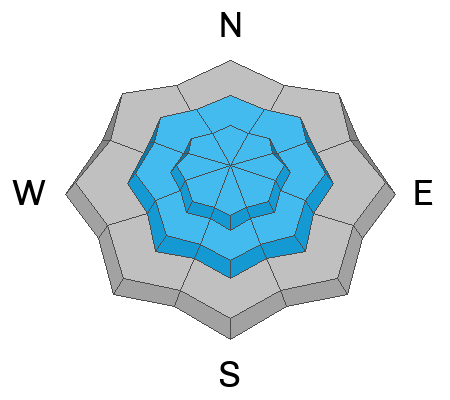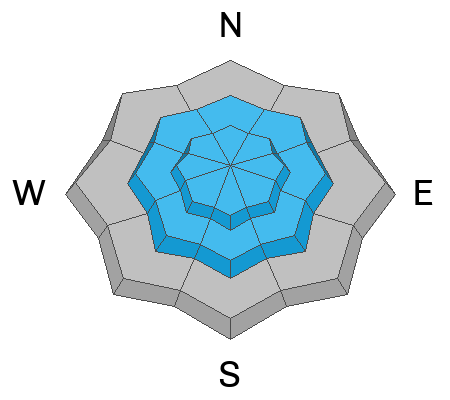This morning, there are a few clouds in the sky and a final few flakes could be falling in the mountains. Temperatures dropped significantly since yesterday morning, sitting in the single digits to mid-teens F. Overnight the mountains received a trace amount of snow. Bringing snow totals for the Central Wasatch between 10-20" of snow (1.30-2.30 of water). Yesterday, winds transitioned from the Southwest to the Northwest. At the 9000' ridgelines winds are currently blowing at speeds of 10-15 mph with gusts up into the mid-20s mph. At the 11,000' ridgelines, winds are gusting close to 35 mph.
Today, we get a rare period of generally quiet weather. Skies will be partly cloudy, with the chance for a light snow shower this afternoon. No more than a trace amount of snowfall accumulation. Winds will remain from the Northwest, blowing 10-20 mph with gusts up to 25 mph at 9000' ridgelines. At the 11,000' ridgelines, we could see gusts up to 40 mph.
Weather remains active. Another long-duration storm is expected early next week, this potential atmospheric river event should bring a lower rain/snow line than the last two.
Yesterday was an active day in the backcountry. We had reports of natural wet-loose activity in the lower elevation bands, and both natural and human-triggered soft slabs of new snow and wind-drifted snow in the mid and upper-elevation bands.
Lanes leap, a reoccurring indicator slope in upper Big Cottonwood Canyon. A natural soft slab of wind-drifted snow at 9,600' on a north-facing aspect that failed on faceted grains 2' deep. (B. Nalli)
Ski resorts also reported widespread soft slabs of both wind-drifted snow and new snow, reactive to both explosives as well as skis.
There was also a close call with a roof avalanche, remember with so much snow on rooftops in mountain communities, roof avalanches will be a significant hazard as the sun warms roofs in mountain neighborhoods. Children playing and adults shoveling solo are especially vulnerable to this hazard.
Get all observations
HERE.











